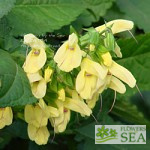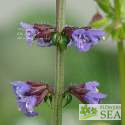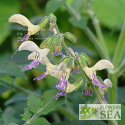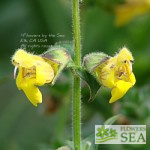(Campanula Leaf Sage) The deep yellow flowers of Campanula Leaf Sages are scarce among Salvias. Salvia campanulata 'CC#7706' is a sunny Himalayan beauty.
The foliage is sticky and hairy. It has tough basal clumps of large, ovate to heart-shaped leaves.
The "CC" in this sage's scientific name denotes British plant explorer Chris Chadwell, a Himalayan specialist who collected the seed for this plant and one of our other varieties of Campanula Leaf Sage. FBTS is one of many investors that help fund his seed-collecting expeditions.
Chadwell gathered the seed of variety 7706 in an open setting within the Manaslu Range of Nepal at an elevation of about 10,827 feet. Mount Manaslu is the eighth tallest peak in the world and rises up to about 26,782 feet.
The epicenter of Nepal's devastating April 2015 earthquake was located in the Manaslu region.
Given the location where Chadwell found variety 7706, it's possible that it may prove more sun loving than other S. campanulata FBTS grows. However, we can't yet specify its exact qualities. By ordering this variety, you plant adventure in your garden. We'd love to receive feedback and photos.
In general, Campanula Leaf Sages thrive in shade and tolerate heat, cold and damp roots. So we recommend this sturdy herbaceous perennial for shady borders and woodland-style gardens. It's unlikely that deer will munch it. You may find that it attracts bees.
Don't wait long to order. This is a difficult plant to start from seed, so our quantities are limited.
Question?













